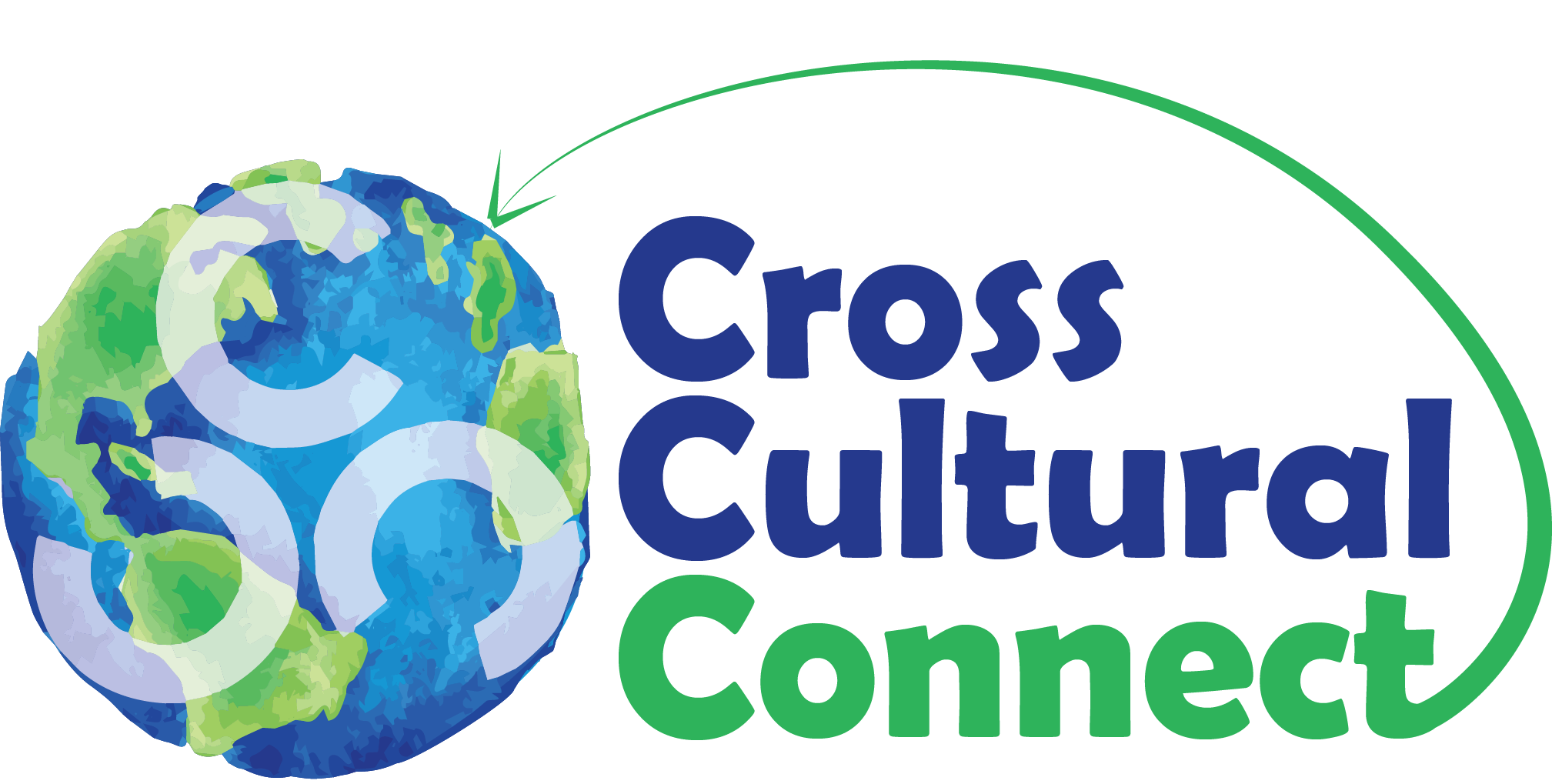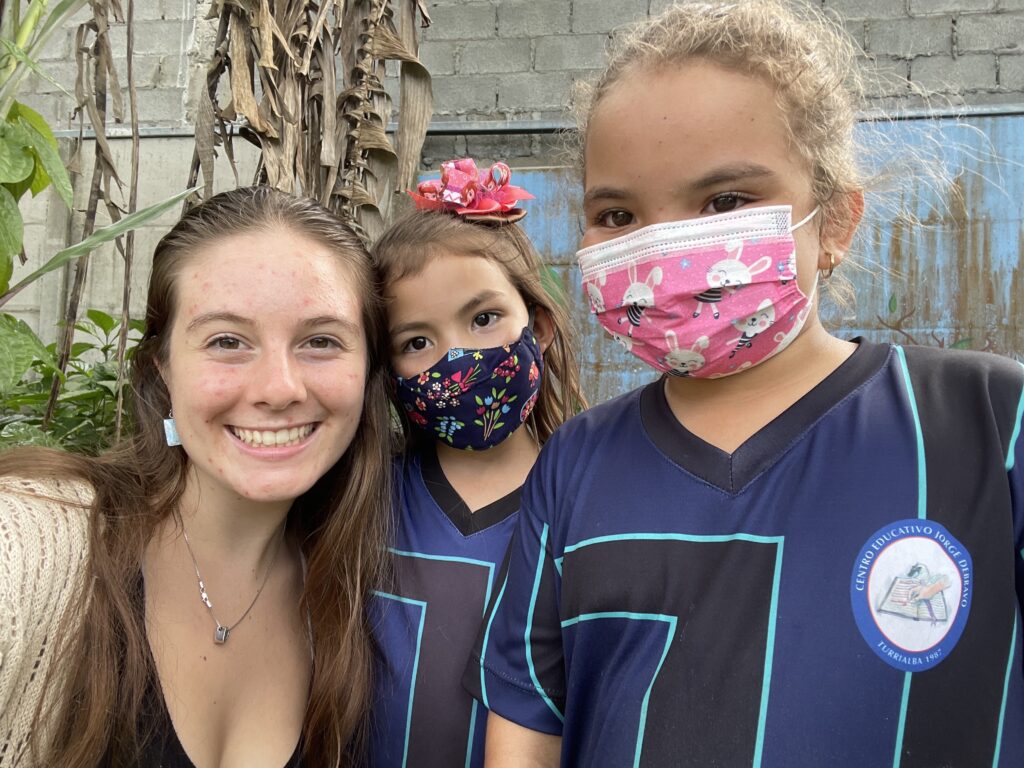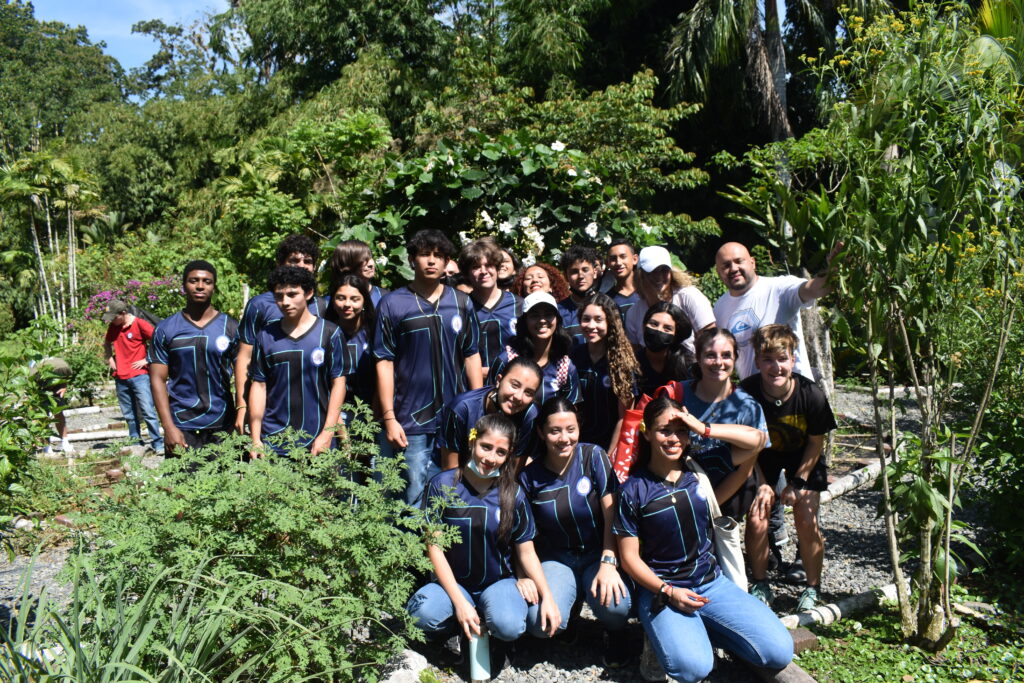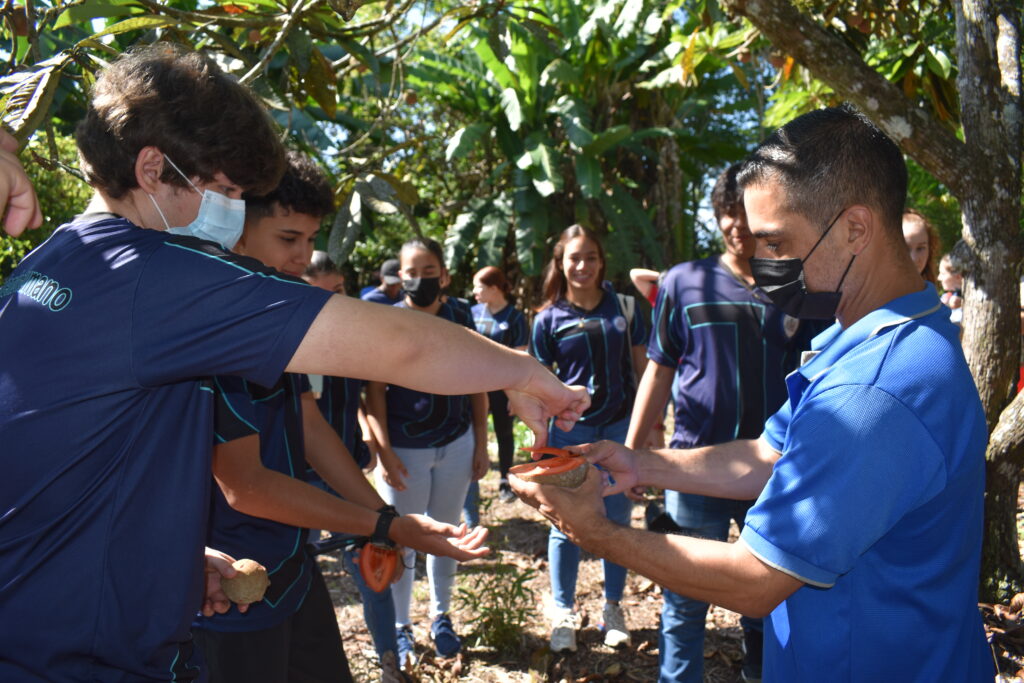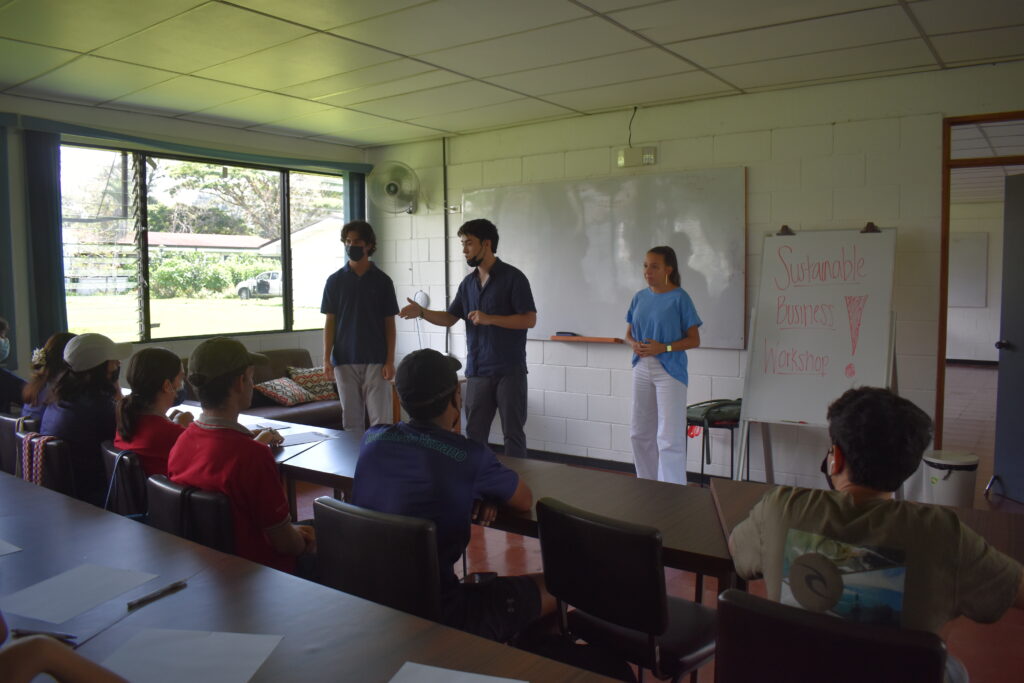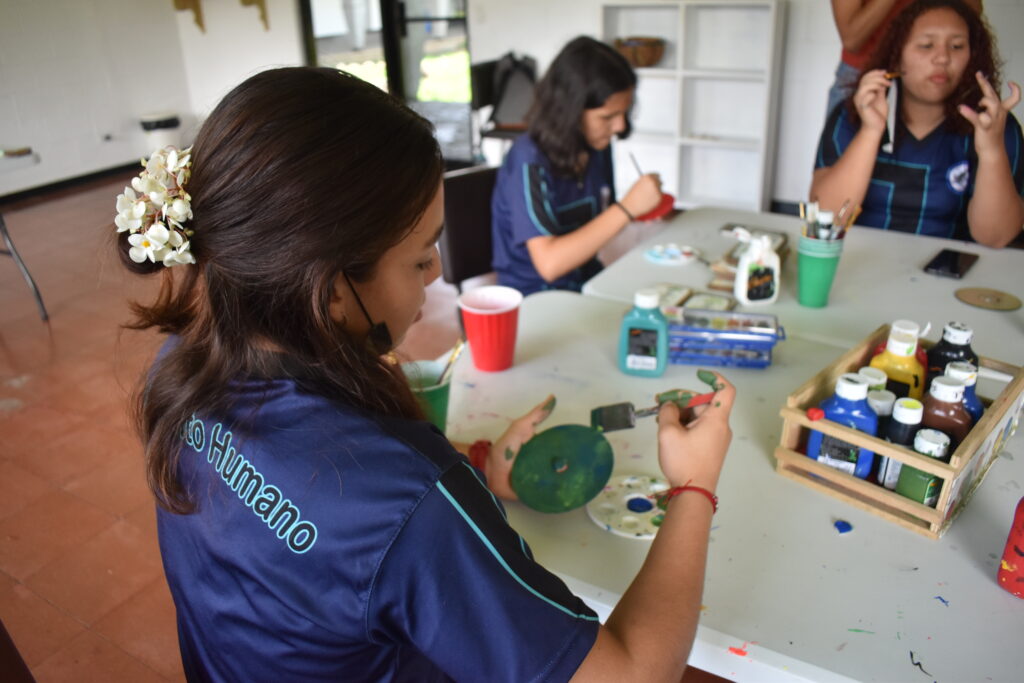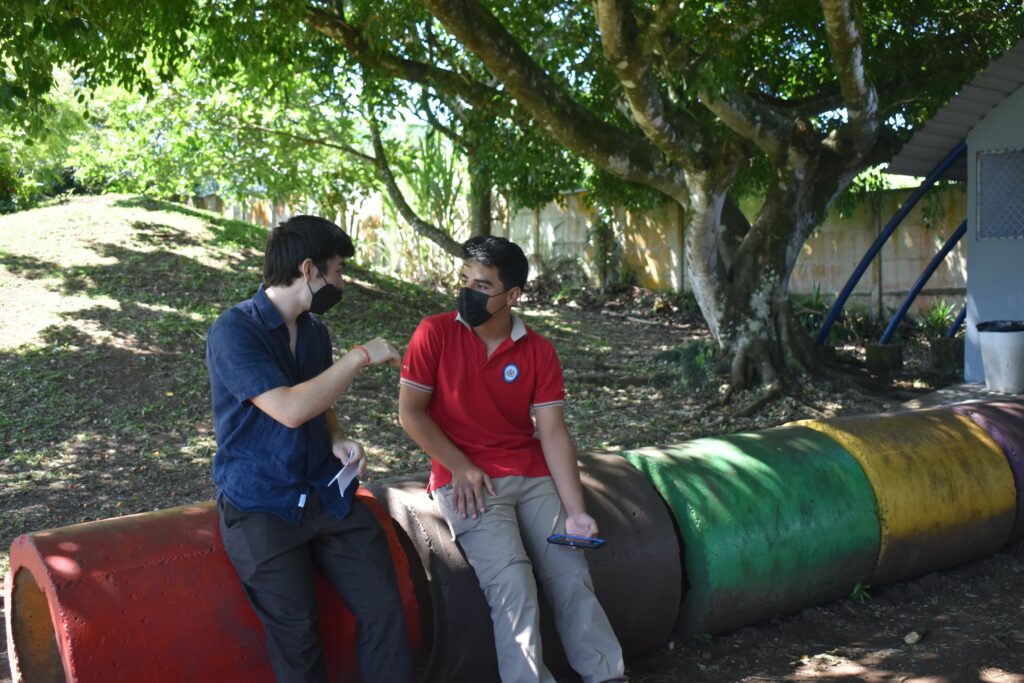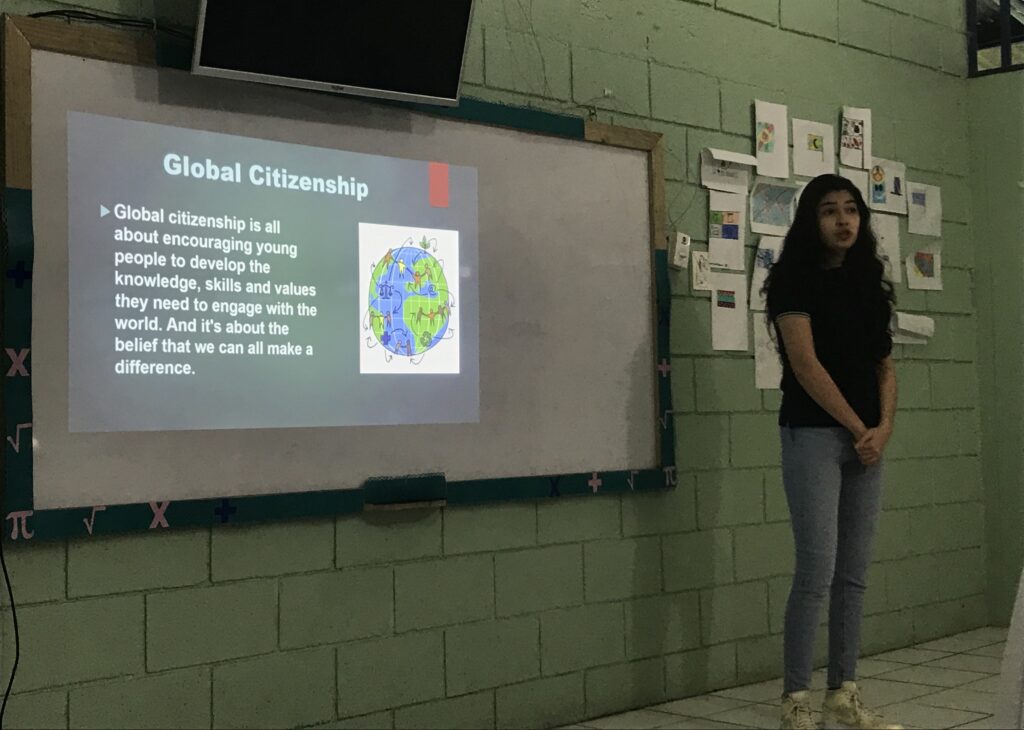Recently, CCC has been collaborating with students from Amigos de las Américas, an international language and culture immersion program. We had the opportunity to introduce high-school-age Amigos students from the USA to college students from the University of Costa Rica (UCR). The UCR students are studying to be certified as English teachers, so connecting them to the Spanish learners from the USA allowed all of the students to develop language skills in a positive learning environment.
We began the connection by matching students to digital penpals from the opposite program. The UCR students wrote letters in English introducing themselves to their peers from the Amigos program, who responded in Spanish. A week after this initial connection, students had the chance to meet in person for a tour of the UCR campus. For the American high school students, this was a valuable insight into what an international university looks like and how they function.
Students then split up into groups to participate in various activities focusing on creativity. One project involved writing poems together about culture, a unique opportunity for them to develop effective communication and cultural awareness. They communicated in both Spanish and English to practice their language skills. One of the students from UCR, who is training to be an English teacher, expressed that it was their first opportunity to converse with a native English speaker.
At the end of the connection, students shared a potluck on the UCR campus to celebrate their last day of classes. Students brought Costa Rican snacks, homemade banana bread, and local fruits, and our CCC leader provided snacks from Pennsylvania. This allowed students to try a variety of foods and have fun discussions comparing the similarities and differences. As they said goodbye, many participants exchanged social media accounts and expressed that they wanted to stay in contact with their new international friends. Connections like this are powerful ways for students to develop their identity as citizens of the world.
About the organizations:
Amigos de las Américas provides volunteer and cultural immersion opportunities in the U.S. and Latin America for young people ages 13 to 22. Its mission is to inspire leaders through authentic service and immersion experiences.
University of Costa Rica (UCR) is a public university centered around a humanist teaching approach that encourages social work and research activities. It is the oldest and largest institution of higher learning in Costa Rica and the most important research university in the country.
Cross Cultural Connect is the glue that brings them all together!
